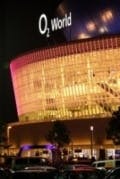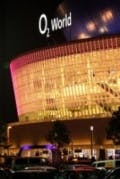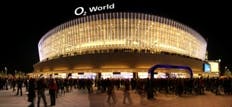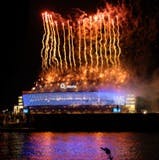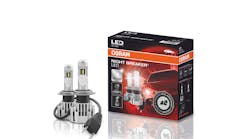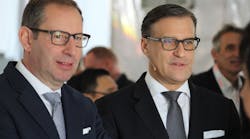On the exterior, a massive LED installation stretches across the building's curved glass facade and inside, two lobbies glisten with thousands of controlled fluorescent and LED fixtures behind frosted acrylic lenses. Visitors to the arena are greeted by the colorful moving graphics and video effects that are driven across the installations on event nights. LightWild provided the engineering piece and the physical supplies. Installation was done by a German construction firm.
Randy Jones, LightWild’s Director of Engineering, added that a key feature to the project’s success was the company’s “ability to work early on with the architects and engineers and achieve both the light output and the look — aesthetically — that was appealing to the owners. It was a rewarding challenge doing it long distance across the globe.”
Using its LightWild Pixel as the LED light source, LightWild worked closely with the arena's architects — HOK Sport and JSK Architects — and owner Anschutz Entertainment Group to engineer a building mullion that houses the Pixels while blending seamlessly into the building's exterior facade. In the lobbies, LightWild's project engineering team and building architects designed a blue aluminum housing with openings for lenses that encased the Pixels and installed directly to the arena walls.
The LED façade is 380 feet (116 m) long by 40 feet (12 m) tall and is built on a 104-degree curve with an average radius of 213 feet (65 m). There are 117 vertical mullions spaced slightly more than 3 feet (1 m) horizontally across the façade. In all, there are 7020 LightWild Pixels installed in the vertical mullions on the façade of the arena. With 40 LEDs/Pixel, 280,800 LEDs are in use on the façade.
“The curved façade presented an optical challenge more than a physical challenge. Physically, each section of glass on the facade is flat but there is a slight angle (<1°) between each section so that collectively the façade is curved. Therefore, the horizontal light from our LEDs tends to separate more than it would from a flat surface,” said Jones.
“Added to this natural separation of the light was the desire of the owner for maximum view-ability from both close-in and from the side of the façade. LightWild’s solution was to develop a secondary optical lens that allowed maximum light transmission (88%) but also created light dispersion in the horizontal direction. Multiple samples were created and reviewed with the US architects and the German project team to find the perfect solution,” continued Jones.
“The furthest I saw the façade was from a mile and half away, from the 200 m tall TV tower at the Alexander Plaza. We actually could read some of the lettering at that distance,” said Jones.
A PC with LightWild’s proprietary software controls content scheduling. Within the system, the operator can do quick text interrupts. For example, if a player inside scores a goal, they can replace the exterior façade to read “Goal!”
Lobbies
The reasoning behind using LEDs
The owners of the arena weren’t striving for energy efficiency as a main goal when building the facade. Instead, their client and naming rights partner, O2, a UK cellular company, liked LEDs because of their fast-changing characteristics and their flexibility. They could change the façade at any moment to get passersby’s attention.
Using a video display instead of LEDs was considered early on in the process. However, “the media feature was supposed to incorporate the entire façade. A video system of that size would be astronomically expensive. Also, a conventional video display would block all visibility through the south façade from inside the arena. Not only do our LEDs block 0% of the visibility, the light from our LEDs is imperceptible from inside the arena,” Jones said.
Contract details
LightWild worked locally with HOK, architects in Kansas City, who had seen LightWild’s work on the south façade of the Kansas City Marriott. HOK recognized that work and saw a place for it so it contacted LightWild and they began a series of engineering reviews with the Berlin team with trips to Berlin. Finalizing the plans took about a year. The contract was signed in early 2007 and the company delivered product to Berlin in January 2008.
“It was a very quick process, but we had to meet deadline of the arena’s opening. We also had to fit within the owners’ very stringent architectural needs concerning aesthetics, light output, and light pollution. We had to work with local authorities and architects to make sure that all the regulations were adhered to.”
One challenge was to “make sure all the LEDs, cables and controls would be concealed to the public but accessible within the architecture to the staff. We worked very closely with the façade design team. On a detailed technical level, that was the challenging part, but it worked out extremely well.”
When the arena opened on September 10th, the reaction was swift and positive.
“Everybody in the Anschulz Entertainment Group who had contracted us was ecstatic. At the opening ceremony, they couldn’t have been happier,” said Jones.
“One thing that was fun, during the opening events, was just walking around outside with the public, who were stopping and taking photos of the façade. It was a kind of a rubber meets the road moment,” Jones said. “Yeah, people love this thing. It is so different. That was cool.”
The arena will be used for concerts, sporting events, and other special events.
Photos: Moritz Wade/perceptual.de and LightWild
